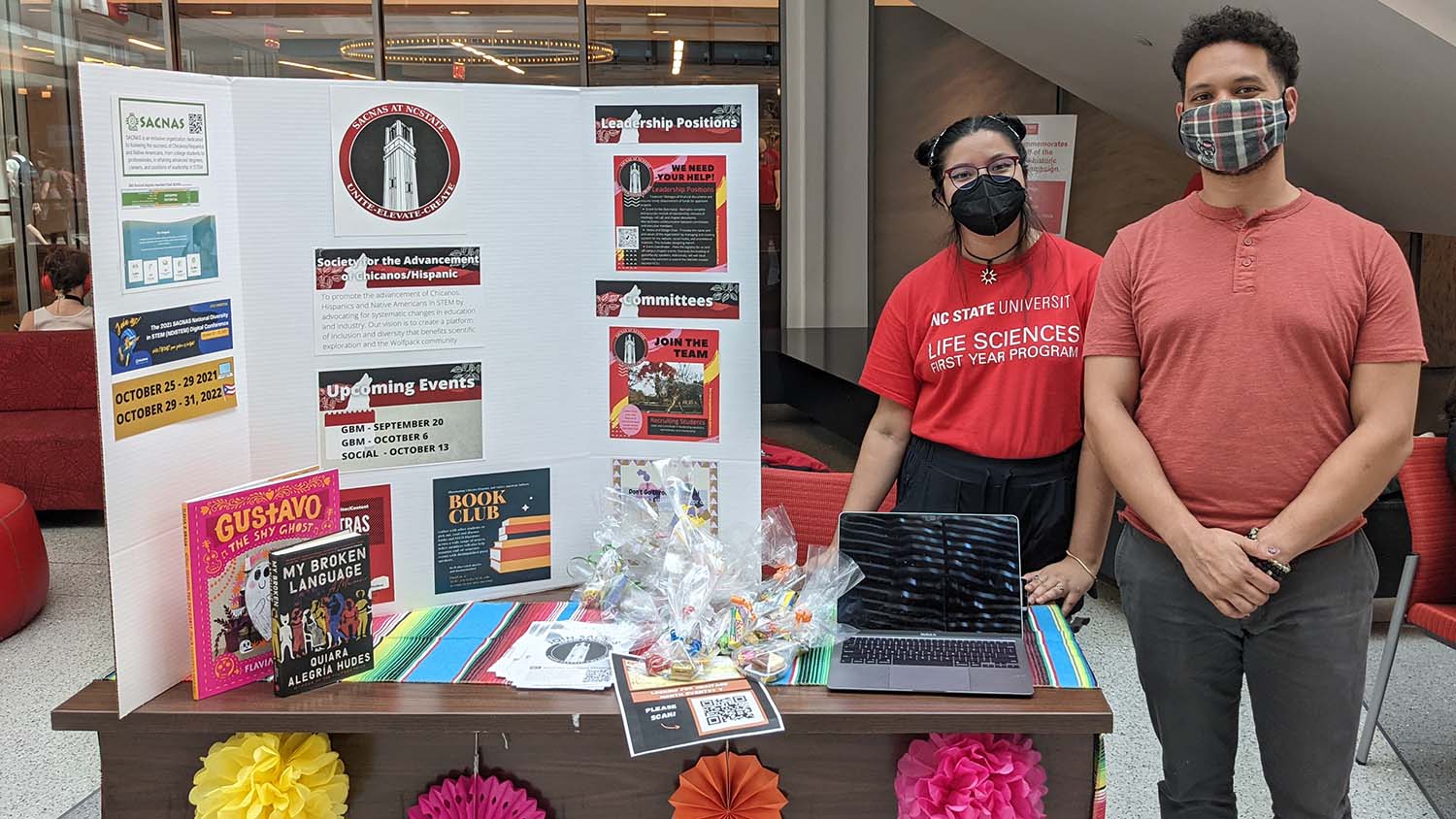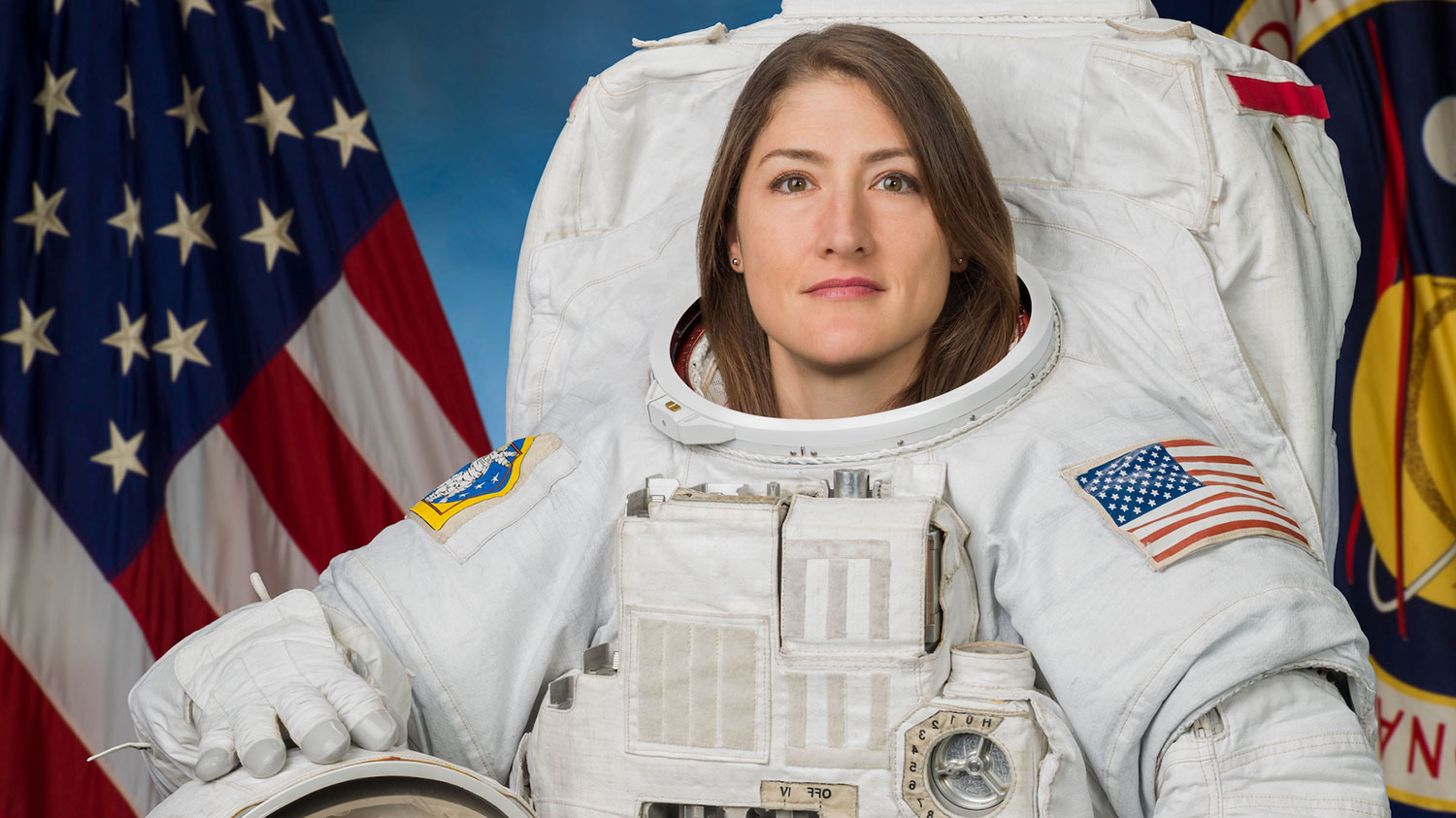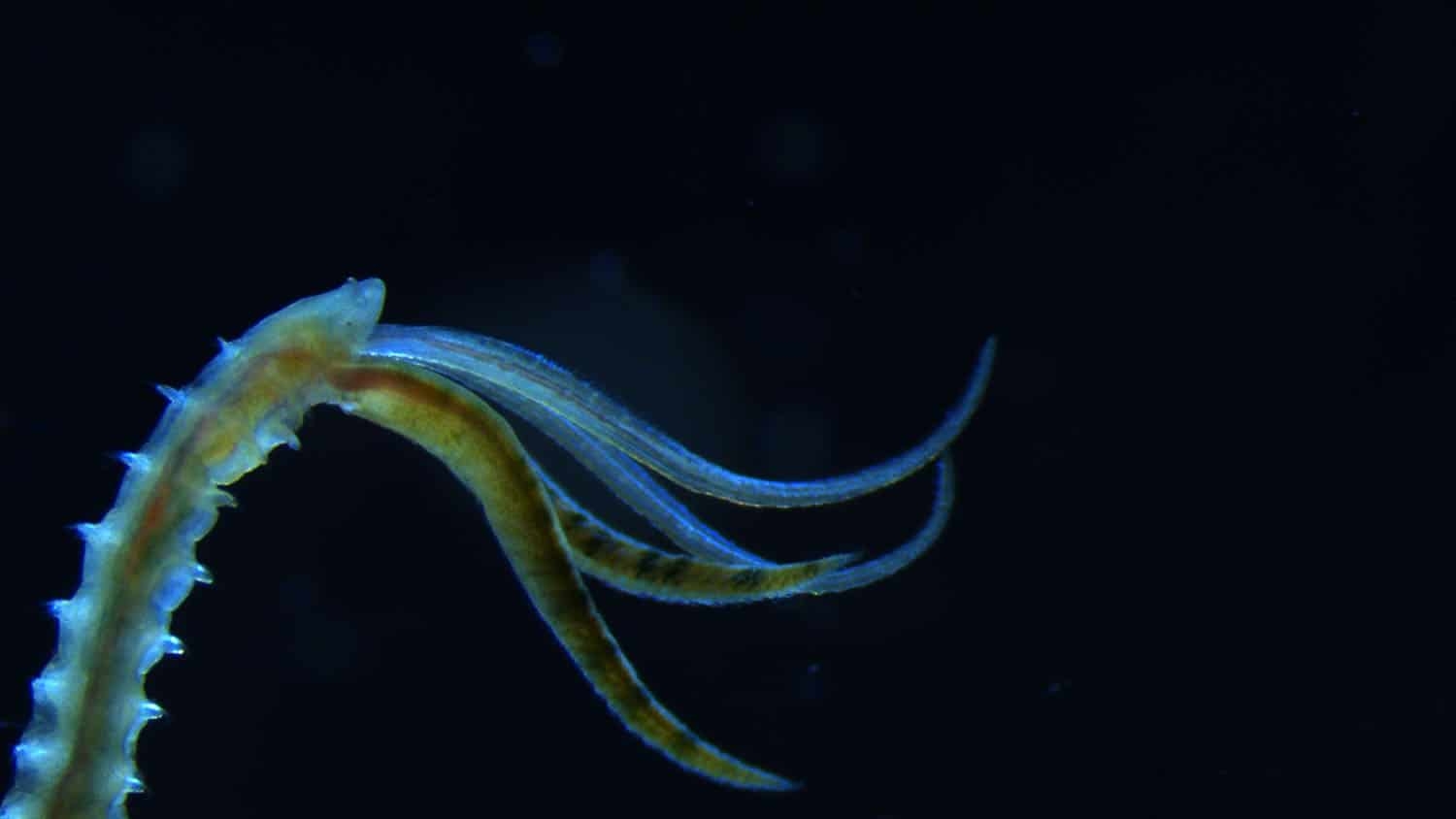SACNAS: A Model for Diversifying the Sciences
NC State's chapter of the Society for Advancement of Chicanos/Hispanics & Native Americans in Science is promoting diversity in the sciences.

In the fall of 2020, an email landed in Mili Jimenez’s inbox that untapped a new support system for her at NC State. It was an invitation to join a newly formed chapter of the Society for Advancement of Chicanos/Hispanics & Native Americans in Science (SACNAS).
Jimenez, a senior majoring in biological sciences and computer programming, didn’t hesitate to accept.
“If you are Latino, it’s not very common to see someone in the sciences that looks like you, that you can relate to,” says Jimenez.
But a little representation goes a long way.
“I remember hearing about Carlos Goller [associate teaching professor in the Department of Biological Sciences] and feeling like I could relate to him because we both come from Mexico,” says Jimenez. “Seeing someone from my country — and even from the same state where I was born — at the same university is really what motivated me to still continue my path.”
SACNAS aims to foster the success of Chicanos/Hispanics and Native Americans in obtaining advanced degrees, careers and leadership positions in science, technology, engineering and mathematics (STEM). There are 118 SACNAS chapters nationwide.
Today, Jimenez serves as the NC State chapter’s president. And she’s working to make SACNAS a place where underrepresented students can find the resources and support she wishes she’d had at the start of her sciences journey.
Reviving SACNAS at NC State
In the summer of 2020, Caiti Heil, assistant professor in the Department of Biological Sciences, discovered that NC State had a dormant chapter of SACNAS. Seeing an opportunity to help address systemic issues at the university, she enlisted the help of her colleagues at the department — Goller, Melissa Ramirez and Claire Gordy — to revive the organization.
Heil had first learned of SACNAS during her time as a postdoctoral researcher at the University of Washington.
“I saw more diversity represented in the graduate population there because of SACNAS,” she says. “There was kind of a pipeline where people had been involved in SACNAS as undergraduates at other institutions and then came to the University of Washington.”
Even with the challenges of building up an organization during the COVID-19 pandemic, SACNAS has already made an impact on its members.
For Maria Prado, a senior biological sciences major who moved to the U.S. from Ecuador when she was 12, connecting with other students and faculty members that had gone through similar experiences encouraged her to keep pursuing a career in the sciences.
“Coming from an immigrant background, most of the people that I’ve met were born in the U.S., so through SACNAS, it’s nice to meet other students and faculty who had to go through the same transition that I did,” she says.
Demystifying Undergraduate Research
As a first-generation college student, Jimenez says she struggled most with knowing how to communicate with faculty members to learn about opportunities.
“When I was a first-year, I found the process to be harder just because I’m a first-generation student at an American university,” says Jimenez. “Oftentimes, the undergraduate research organization talked about the importance of finding a mentor, but they didn’t specify how.”
Due to a lack of a formal way for faculty members to recruit undergraduates, the process of finding research opportunities can be a mystery for many students.
As president of SACNAS, Jimenez hopes to address this issue by connecting students with diverse faculty members across campus and developing resources to help underrepresented students seek out opportunities with confidence.
Her first step has been to collect information — through a form that Heil helped distribute via Twitter — on faculty members that are looking for undergraduate researchers this summer. So far, they have been responsive. When the form made its way to Marcelo Ardón, an associate professor of forestry and environmental resources in the College of Natural Resources, for example, he even volunteered to be a panelist for one of the organization’s events.
The event brought together undergraduate students seeking research opportunities and faculty members with open positions, with Ardón giving students tips on how to get involved in research.
“My main goal with SACNAS is to just help other students find their pathway.”
Jimenez plans to host at least two more similar events this semester. She is also putting together an email template that students can use to ask faculty members about research opportunities in their labs.
“My main goal with SACNAS is to just help other students find their pathway and avoid making the same mistakes that I have,” says Jimenez.
By bringing underrepresented students and faculty members together, SACNAS has been promoting collaboration among different colleges and departments across NC State, which Heil says can be challenging.
“I think SACNAS is highlighting the problem that people are having a hard time finding each other, and I think it can be a really successful model for diversifying the sciences,” says Heil.
SACNAS prioritizes community engagement beyond the university, professional development and the promotion of diversity, equity and inclusion in STEM. Its annual National Diversity in STEM Conference — the largest of its kind — gives members from across the country the opportunity to celebrate their cultures while attending research presentations, professional development sessions, keynote speaker addresses, and a graduate school and career exposition hall.
“The organization has a proven infrastructure that I think really addresses a lot of issues related to both recruitment and retention,” says Heil. “I hope that SACNAS at NC State can help move people from the undergraduate level in the sciences into higher level education or into industry, whatever their career goal is.”
- Categories:


